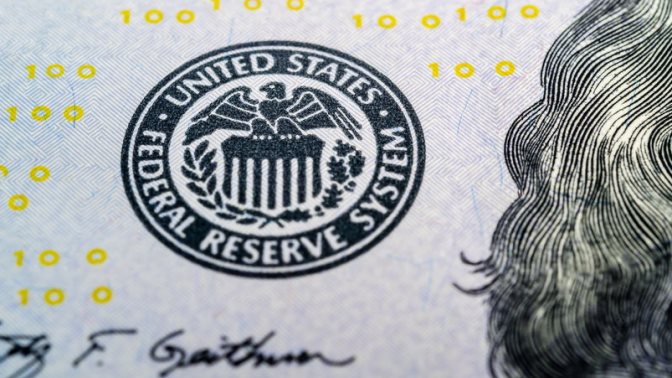
The exponential growth in new confirmed cases of the novel coronavirus globally has perplexed investors, market experts, policymakers and regular people over the past few weeks. The constantly evolving situation, among other things, has brought the economic activity in many parts of the world to a standstill.
Most of the distortions in the productivity are, of course, sanctioned and indeed implemented by local authorities, in an attempt to circumvent the further spread of the disease among the general population. So far the governments of Italy, China, Norway, France and other countries have all decided to impose national lockdowns in a series of forceful measures in the ongoing battle against the global COVID-19 outbreak; and the US has followed suit.
A major concern is that the overall efficiency of quarantining people, as a measure for containment and negating the spread of the virus, is uncertain. At the same time, however, it is almost certain that the inhibited economic activity is going to have long-lasting and negative consequences for growth.
People are apprehensive of the grim prospects of a new economic recession; that is why major central banks and governments have stepped up their mutual efforts last week, to support the reeling global economy and hopefully offset the stock market rout.
In the United States, the Federal Reserve has already cut rates once this month, and the consensus forecast project an additional reduction of the federal funds rate by 50 basis points to be advanced by the FOMC at its gathering this Wednesday. In addition to this, the Committee is also expected to bolster further its quantitative easing program, which is expected to alleviate some of the pressure from businesses, whose normal operations have been impeded by the national lockdown. In short, the FED is anticipated to try everything it's got in the fight against the economic fallout. The question is – how effective could these monetary measures be in light of the most recent developments?
The main agenda of the FED at present, similarly to other central banks worldwide, is to boost the volume of short-term liquidity to the markets in order to offset the thwarted capital flows to businesses. Without it, small and medium businesses would suffer from mounting costs and virtually no incoming revenue streams, which would eventually lead to their bankruptcy. The odds against small and medium business are going to become increasingly unfavourable the longer the lockdown is extended in time. This means that for the time being the liquidity provided from the FED could be the only lifeline of incoming funds such companies could use to weather the storm.
The announcement of increased money supply within the economy was what prompted the jump in the stock market last week, on investors’ renewed optimism that the Federal Reserve’s actions are going to negate the underlying risk to the business cycle. Nevertheless, the steps implemented by the FED should not be taken lightly as a sweeping remedy for the external pressures to growth. Rather they should be perceived as a sedative to the temporary economic pains that are currently felt in the states. Increasing the money supply is not a long term solution to a potential economic recession that is caused by an external factor to the normal financial processes – in this case, a global pandemic.
In theory, the model of quantitative easing – Open Market Operations – is quite a straightforward one. The idea of ‘printing money’ into the economy – increasing the aggregate money supply – is achieved by the FED when the central bank starts buying more treasury bills. Subsequently, there is a noticeable tradeoff – the yield of government bonds falls, but there is more debt circulating the economy, which, in turn, could be used to stimulate economic activity.
The underlying idea is that the bolstered money supply and lowered interest rates are both going to increase the incentives of businesses to borrow the ‘cheap’ capital from the banking sector and subsequently reinvest it into the economy, in anticipation for increased growth. The presumption is that those increased investments are going to lead to the creation of new jobs, and increased wages and production. All of these factors should contribute to enhanced aggregate demand, which, in turn, is expected to broaden the underlying economic activity. This is how the Keynesian view on the circular flow of the economy postulates that demand creates growth, which in turn creates more demand. The view broadly underscores the assumption that the economy’s rate of expansion can be steered up.
This is, however, where theory and practice diverge from each other. Two chief problems arise for the successful implementation of such a policy. First of all, the ultimate success of the strategy depends on the presumption that people are going to increase their rate of investment indeed, when the available liquidity is increased. In reality, the model fails to account for the unconventionality of the present circumstances.
The general panic that is currently weighing down on global markets is stemming from the fear that the pandemic is going to become increasingly more detrimental. As the situation continues to evolve, progressively fewer businesses and individuals are going to be willing to engage in new economic activity, with or without the low borrowing costs. The underlying problem can be summed up with the uncertainty that looms over the economy – how many entrepreneurs would be willing to borrow capital, albeit at lower interest rates, and start new businesses under these volatile conditions? Essentially, in the conditions of a global pandemic on the rise, cheap capital may no longer be a sufficient incentive for small and medium businesses to engage in new business ventures, which would not lead to the so-desired boost in aggregate demand.
Second of all, even if people are courageous enough to borrow capital and subsequently invest it in new business operations, there is no guarantee that those would turn out profitable in the long run. Most small and medium-sized firms are most likely going to fail in the mid-term, given the unpredictability of the global supply networks at present, which means that unemployment is more likely to grow. Consequently, the wage rate is going to fall for most workers and production is going to stagnate. The final result would be the exact opposite to the initial goal – diminished aggregate demand due to subdued consumer spending.
The two arguments above paint a grim picture in a worst-case scenario, which is not necessary to pan out in such a way. Nevertheless, policymakers should realise that extensive monetary policy works best as an antibiotic to economic ailments when it is used appropriately – only when the threat of a potential recession is real and observable. The frequent and sometimes unnecessary use of monetary policy degrades away from its usefulness at times of crises, when it is truly needed. The FED had previously used looser monetary policy for political and non-essential purposes, which means that in light of the recent developments, it may have already lost its decisiveness. You truly can't have too much of a good thing, and the overreliance on low interest rates and high liquidity is rapidly eroding from the policy's effectiveness. The most pressing question now is whether it would be enough to avert a new massive economic crisis?
Meanwhile, the markets are already bracing for the results from FOMC's meeting this Wednesday. The prevalent forecasts anticipate the Committee to cut the interest rate by half a percentage point and to bolster the OMO even more. Just how effective the economic sedative is going to be this time remains to be seen.




















